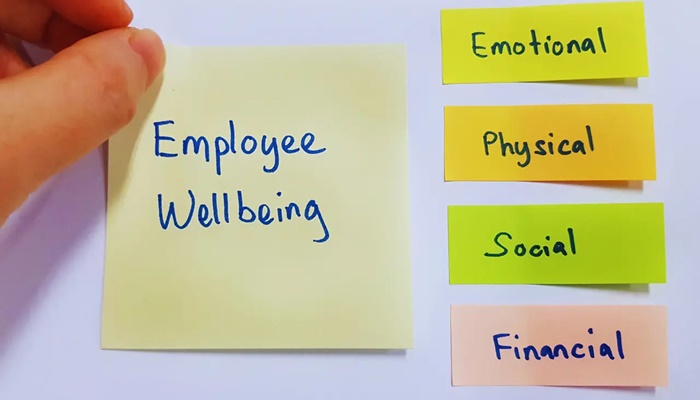Employee health and wellness initiatives have evolved from basic insurance coverage policies to comprehensive programmes that promote both physical and mental well-being. As businesses increasingly recognise the importance of fostering a healthy workforce, the design and delivery of these initiatives have also been carefully tailored to address the diverse needs of employees. While the pandemic was a watershed moment, exposing the limitations of reactive healthcare models and catalysing a shift towards proactive, preventative strategies, several transformations are underway in the employee wellness space that warrant a deeper discussion.
At a recent roundtable discussion organised by People Matters and MediBuddy, HR leaders and benefits experts from diverse industries convened to discuss their insights, challenges and best practices for rewriting the corporate wellness playbook. Moderated by Ashwani Dahiya, Managing Director at TRC Management Consulting, the conversation underscored a critical shift in perspective: while traditional employee health benefits often focus on post-crisis care, the real opportunity lies in prevention and proactive engagement. This article summarises the compelling conversation, offering actionable ideas for organisations seeking to empower their workforce and cultivate a culture of holistic well-being.
The evolving landscape of employee health: From reaction to prevention
The discussion began by highlighting a striking statistic: over 70% of employee health issues are preventable with early intervention, yet many organisations continue to rely on reactive models that address illness only after it arises. Sonal Gupta, Vice President at MediBuddy, shared that this approach not only drives up absenteeism and insurance costs but also contributes to employee disengagement. This is also a double whammy for employees, who are not only unwell and miss out on wages but are also burdened by the financial strain of unplanned medical expenses. This highlights a pervasive issue where many current programmes only activate post-hospitalisation, leaving employees vulnerable during the crucial silent symptom phase.
Historically, the wellness playbook comprised Group Medical Coverage (GMC) policies, annual health check-ups and Employee Assistance Programmes (EAPs). However, the emerging playbook now integrates OPD benefits and highly flexible models that cater to the diverse needs of entire families. This evolution is evident in the remarkable increase of companies offering OPD plans in India, from a mere 18-19% before the pandemic to 38% in recent years.
Furthermore, a 2022 survey revealed that health and wellness benefits are the second most important offering employees seek from their employers. This expectation aligns with the substantial out-of-pocket expenditure Indian families face on OPD benefits, often exceeding 50% of their total healthcare costs. With over 60% of India’s healthcare expenditure attributed to OPD, primary and secondary care, the need to pivot from tertiary care models to preventive and OPD-focused approaches is clear.
While a typical INR 25,000-30,000 OPD cover in metros may not be a game-changer for white-collar employees, it is increasingly being viewed as a bare minimum requirement and a crucial differentiator in employer branding and a competitive advantage in attracting and retaining talent.
Tailoring benefits for diverse employees and their unique needs
A key insight from the discussion was the necessity of hyper-personalisation in wellness offerings. Given the varied life stages and health goals of employees, this is essential for higher adoption and usage rates. For instance, while younger male employees might prioritise gym memberships or EAP programmes, females aged 28-35 may require gynaecological consultations or maternity care. Similarly, employees in the 35-45 age bracket might seek support for metabolic issues or parental coverage, and those aged 45-55 may focus on health check-ups and chronic disease management for conditions like diabetes and hypertension.
The rapidly ageing population in India further compounds the growing demand for elderly care programmes. A notable trend is the expansion of coverage to include not only employees but also their dependents, spouses, parents, in-laws, same-sex partners and even siblings with different needs. Similarly, relationship issues, often overlooked, are emerging as a significant driver of emotional distress. Organisations are responding with relationship counselling and proactive red-flag management, ensuring that support is available before crises escalate.
Many organisations now offer an integrated ‘wellness wallet’, offering online and offline consultations, medicines, lab tests, annual health check-ups, vision and dental care, and specific wellness programmes such as maternity care, elderly care and chronic disease management. This flexible approach significantly boosts utilisation rates, as it gives employees the autonomy to focus on health issues adequately. Notably, employers offering such programmes witnessed an uptick in the utilisation and frequency of services.
Beyond employee welfare, there is a compelling business case for investing in holistic wellness programmes. Well-curated initiatives have been shown to reduce absenteeism and increase productivity. While the investment in health budgets may currently hover below 1% of overall salary structures, simply increasing this to 2% could yield substantial returns on investment. This reinforces the notion that a truly comprehensive playbook must encompass crisis response, preventive care and OPD services, with daily well-being as its most critical component.
Overcoming challenges and fostering a culture of wellness
A few challenges were found to be prevalent across industries, with the foremost being the financial sustainability of programmes and recording their ROIs. As the consensus gravitated towards offering a flexible wallet where employees can choose how to utilise funds based on their requirements, cashless models for OPD were also highlighted as a best practice, addressing issues of fraud and administrative burden often associated with reimbursement models. reduce costs and absenteeism but also enhance engagement, loyalty and productivity. The need for the said cashless system (instead of the present reimbursement model) will drive utilisation and also help reduce FWA (Fraud, Waste and Abuse).
Another sensitive yet critical area was parental coverage. While some organisations have moved away from fully sponsoring parental insurance due to escalating costs, others view it as a non-negotiable aspect of their brand, a reflection of care for the extended family, especially in the manufacturing sector, where it can be a significant differentiator. The challenge identified was sustaining standalone parental policies due to low participation and increasing premiums. A hybrid approach, where companies leverage their purchasing power to negotiate favourable rates for employees to voluntarily pay for parental cover, can emerge as a viable alternative to retail policies.
Beyond benefits, the importance of culture in driving wellness adoption is a common refrain across sectors and organisations. The “build it and they will come” approach is clearly insufficient; active promotion and leadership role-modelling are paramount. Companies are increasingly using internal communication campaigns, featuring leaders and employees sharing personal health transformation stories. These narratives, starting with financial wellness and expanding to nutrition, emotional and spiritual wellbeing, foster a sense of psychological safety, encouraging others to engage with available services.
Initiatives like inviting experts for webinars on diverse wellness pillars (financial, emotional, mental) and establishing confidential connect mechanisms through EAP platforms have proven effective, especially in hybrid work environments. The presence of on-site help desks by insurance providers also significantly alleviates employee burdens related to claims and policy queries.
Embedding wellbeing into organisational DNA requires more than policies and programmes; it demands a cultural shift. Leadership commitment is non-negotiable, as leaders are expected to model healthy behaviours and champion wellness initiatives. Some other innovative approaches to building a wellness culture include:
Cohort-specific programmes: Tailoring initiatives to specific demographics, such as a dedicated supplement programme for anaemic female factory workers, demonstrated significant improvements in health markers and productivity.
Health indexing: Categorising employees by health risk (high, moderate, low) and providing targeted care programmes with personalised coaching, medical consultation and access to facilities like gyms and yoga can support employees in managing their health proactively.
On-site counselling and safe spaces for enhanced mental wellness: Providing accessible, confidential spaces for mental and emotional wellbeing, even if initially met with scepticism, has seen overwhelming demand, proving that the stigma around mental health is diminishing. On-site counselling, self-guided meditation spaces and dedicated mental health apps are increasingly part of the corporate wellness landscape.
The “buddy system” and incentivisation: Drawing lessons from the armed forces, the concept of a buddy system for mutual emotional and psychological support, coupled with incentivisation for healthy habits and cross-functional ownership of health, can also be tested. Public recognition of individuals and teams for their wellness efforts also acts as a powerful motivator.
The discussion concluded with reaffirming the shared purpose of ensuring employee wellbeing, and why the transition from a reactive crisis response to proactive health empowerment demands a multi-faceted approach. By prioritising prevention, embracing flexibility, leveraging data and fostering a supportive culture, organisations can not only The corporate wellness playbook is being rewritten—not as a static manual, but as a living, evolving framework shaped by the needs and aspirations of employees. As organisations continue to learn from each other and innovate, the vision of empowered, healthy workplaces is within reach.



















